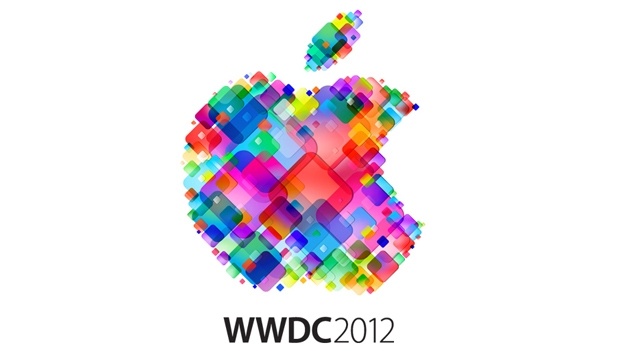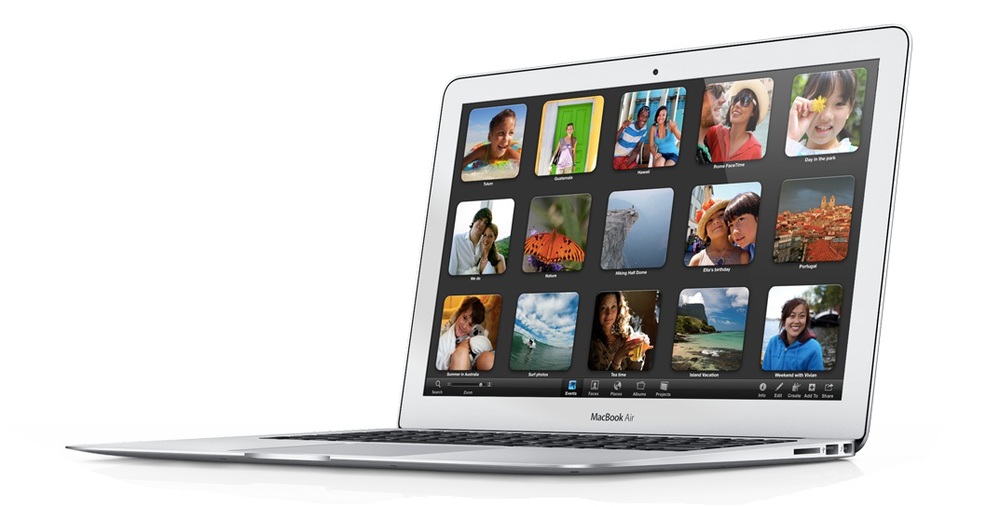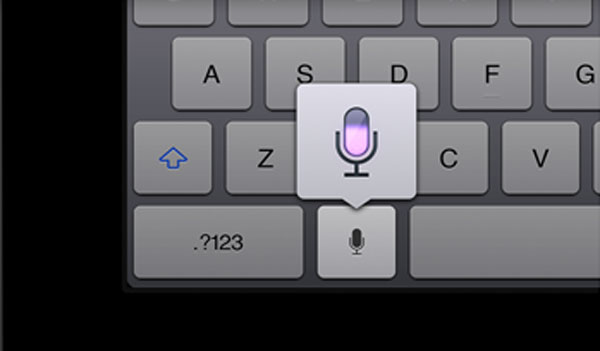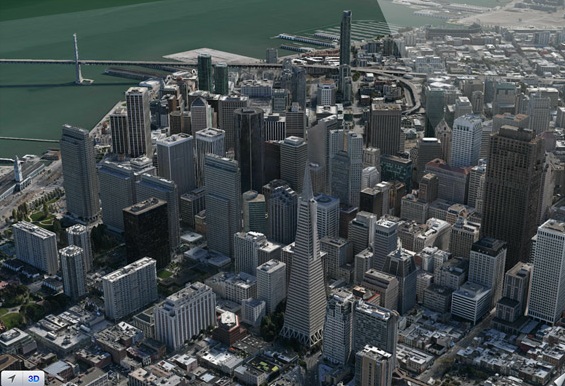Apple WWDC: Tim Cook Reveals Next-Gen Macbook, iOS6, Siri For iPad

It might have been lacking any solid information on when we can expect the iPhone 5 or indeed the much-discussed Apple iTV, but if anything the announcements made by Apple at its Worldwide Developers Conference keynote last night more than made up for their notable absence. Tim Cook teased the tech world watching at the opening of the annual presentation that the company had some “real cool stuff” to show, and in that sense the offering did not disappoint.
And that meant WWDC 2012 was adorned by both details on new software (Mac OS X Mountain Lion and iOS6 were both present) and brand-new hardware revisions. The latter was certainly the more intriguing aspect of the presentation, with Apple bringing us news on a revamped MacBook line-up alongside the reveal of what it’s calling the “next generation” MacBook Pro.
MacBook Refreshes
Leaving that particular show-stealer aside for the time being, the many refreshes banded about has meant that both the MacBook Pro and MacBook Air lines have been updated with Intel’s ‘Ivy Bridge’ processors. The 11-inch Air offers a 1.7Ghz dual-core i5 CPU, 4Gb of RAM, 64Gb of flash storage and Intel HD 4000 graphics with battery life coming in at 5 hours. The 13-inch model, meanwhile, is powered by 1.8Ghz dual-core i5 chips, 4Gb of RAM and the same Intel HD 4000 graphics. Battery life is increased slightly to 7 hours on a single charge. Both MacBook Air models receive a 720p Facetime camera and USB 3.0 slots for high-speed data transfer.
 The meatier MacBook Pro range has undergone similar Intel ‘Ivy Bridge’ treatment. The 13-inch option now features a 2.5Ghz dual-core i5 chip side-by-side the Intel HD 4000 graphics, 500Gb of storage and 7 hours of battery life; and the 15-inch a handsome 2.3Ghz quad-core i7 chip and GeForce GT 650M graphics. A no-show for the 17-inch Pro and the subsequent removal of the notebook from Apple’s online store has all but confirmed earlier rumours of the company withdrawing that particular model from its product range.
The meatier MacBook Pro range has undergone similar Intel ‘Ivy Bridge’ treatment. The 13-inch option now features a 2.5Ghz dual-core i5 chip side-by-side the Intel HD 4000 graphics, 500Gb of storage and 7 hours of battery life; and the 15-inch a handsome 2.3Ghz quad-core i7 chip and GeForce GT 650M graphics. A no-show for the 17-inch Pro and the subsequent removal of the notebook from Apple’s online store has all but confirmed earlier rumours of the company withdrawing that particular model from its product range.
In typical Apple fashion, you’ll have to pay handsomely to upgrade flash storage and on-board RAM from the still unseemly modest offerings (at least in some cases) that come as standard for such expensive pieces of kit - a punch to the gut when the 13-inch Air and Pro starting at not a penny less than a grand, and the 15-inch Pro costing at least £1,800.
The “Next Generation” MacBook Pro
You might have thought updates and revisions across its existing range of MacBook's would be enough for Apple fans to mull over until the next globally-streamed conference, but instead the company had another trick up its sleeve. Labelled the “next generation” of MacBook Pro, the new notebook is nearly as thin as a MacBook Air (quite an achievement in itself) and features a solid state drive of up to 768Gb, a battery capable of lasting around 7 hours on a single charge and 30 days on standby. Par for the course, you'd have thought, until you hear that the brand-new MacBook comes with a simply gorgeous Retina display previously reserved for the slightly smaller screen of the new iPad and the iPhone 4 onwards. Its 15” screen boasts a jaw-dropping resolution of 2880 x 1800 pixels (more than 5.1 million pixels, don't you know) which is sure to make the new Pro look positively breathtaking in the flesh. At prices starting at $2199, our Christmas list has just got a tad more expensive.

iOS 6
We all knew it was coming but WWDC brought confirmation of the features we can expect from the latest version of iOS. It's far from a major improvement over its predecessor but rather brings some welcome tweaks and subtle refinements from that which we've become accustomed over the past two years.
Siri is the first to see such refinement and thus continues to supplant itself at the heart of Apple products. Siri now understands even more languages and has been improved to be able to interpret more human-like commands. Tell Siri you're looking for a film to watch and it'll perhaps bring up cinema A strange omission from the new iPad at launch, voice assistant Siri has been confirmed for the latest iPad with iOS 6. times and/or reviews of some of the movies playing closest to your location. Let it know you missed the Chelsea game and it'll supposedly retrieve the latest sports scores online. The latest version will also allow you to open up applications and post directly to Twitter and Facebook.
A strange omission from the new iPad at launch, voice assistant Siri has been confirmed for the latest iPad with iOS 6. times and/or reviews of some of the movies playing closest to your location. Let it know you missed the Chelsea game and it'll supposedly retrieve the latest sports scores online. The latest version will also allow you to open up applications and post directly to Twitter and Facebook.
Which brings us neatly onto Apple's new-found appreciation of Facebook. CEO Tim Cook has been publicly open about working more closely to Zuckerberg and Facebook HQ for some time now, and WWDC finally brought solid evidence of that fact. iOS 6 offers much deeper Facebook integration than anything coming from Apple before it has matched. Users can now post Facebook status updates through the length and breadth of the OS (in Apps, through Siri etc.), while the relationship has also meant iTunes will now incorporate 'likes' in order for Facebook acquaintances to see what their friends are buying and vice versa.
 Perhaps the most newsworthy update within iOS 6 is that Apple is to drop Google Maps support. Having been a staple, pre-loaded bit of software on the iPhone for years, the move signifies Apple's brave intent in committing to compete with the technology giant more openly. In shying away from using others to help complement its operating system, Apple is giving itself the best chance in paving its own future –- imagine otherwise were Google to drop support to iOS were Android to lose significant market share –- all the while introducing new functionality (turn-by-turn navigation, AI-assisted support) to the 'Maps' feature with the likes of Siri. As we've previously detailed here on NRM, Apple's-own map software will implement 3D mapping technology to allow users to see major metropolitan areas as they are intended; fully three-dimensional and with pan, zoom, tilt and rotate functionality.
Perhaps the most newsworthy update within iOS 6 is that Apple is to drop Google Maps support. Having been a staple, pre-loaded bit of software on the iPhone for years, the move signifies Apple's brave intent in committing to compete with the technology giant more openly. In shying away from using others to help complement its operating system, Apple is giving itself the best chance in paving its own future –- imagine otherwise were Google to drop support to iOS were Android to lose significant market share –- all the while introducing new functionality (turn-by-turn navigation, AI-assisted support) to the 'Maps' feature with the likes of Siri. As we've previously detailed here on NRM, Apple's-own map software will implement 3D mapping technology to allow users to see major metropolitan areas as they are intended; fully three-dimensional and with pan, zoom, tilt and rotate functionality.
And they're really the big talking points of iOS 6. Those calling features which allow you to respond to incoming calls with an iMessage or pre-defined message template are helpful but nothing new when comparing them with their Android 4.0 alternatives, while a 'Do Not Disturb' setting could only be hailed as revolutionary in the 90s. How it's taken this long to come to Apple's iPhone is anyone's guess. With iOS 6, you will now be able to make Facetime calls over mobile networks as well as wi-fi, while Passbook lets you keep your many loyalty cards, boarding passes, store cards, coupons and tickets in one place.
OS X Mountain Lion
Somewhat tamer than its nomenclature might otherwise suggest, Mountain Lion brings nothing but incremental tweaks to the OS, the most significant of which have been already tried-and-tested with in the most recent updates of iOS. And that means the latest version will bring with it the drop-down notification centre first favoured by Google's Android platform but more recently having been adopted by Apple. That being said, Apple's version one-ups its predecessor somewhat in allowing Mountain Lion to automatically sync with the notifications from your iPad or iPhone and remove updates once you've checked them off one of the respective devices. A nice touch.
automatically sync with the notifications from your iPad or iPhone and remove updates once you've checked them off one of the respective devices. A nice touch.
It's a similar trend running through OS X as a whole, with iCloud set to play a big part in how it's used. You'll now be able to message other Apple devices through the OS with iMessage support and easily share documents, notes and notifications with the cloud-based system that Apple has to now done so well in promoting. Finally, Mountain Lion will bring Game Center to Apple's Mac OS. Which begs the question, do people still actually use that!?
Mountain Lion OS X will launch in July as a digital download for $19.99 (around £14) via the Mac App Store.
Richard Birkett

